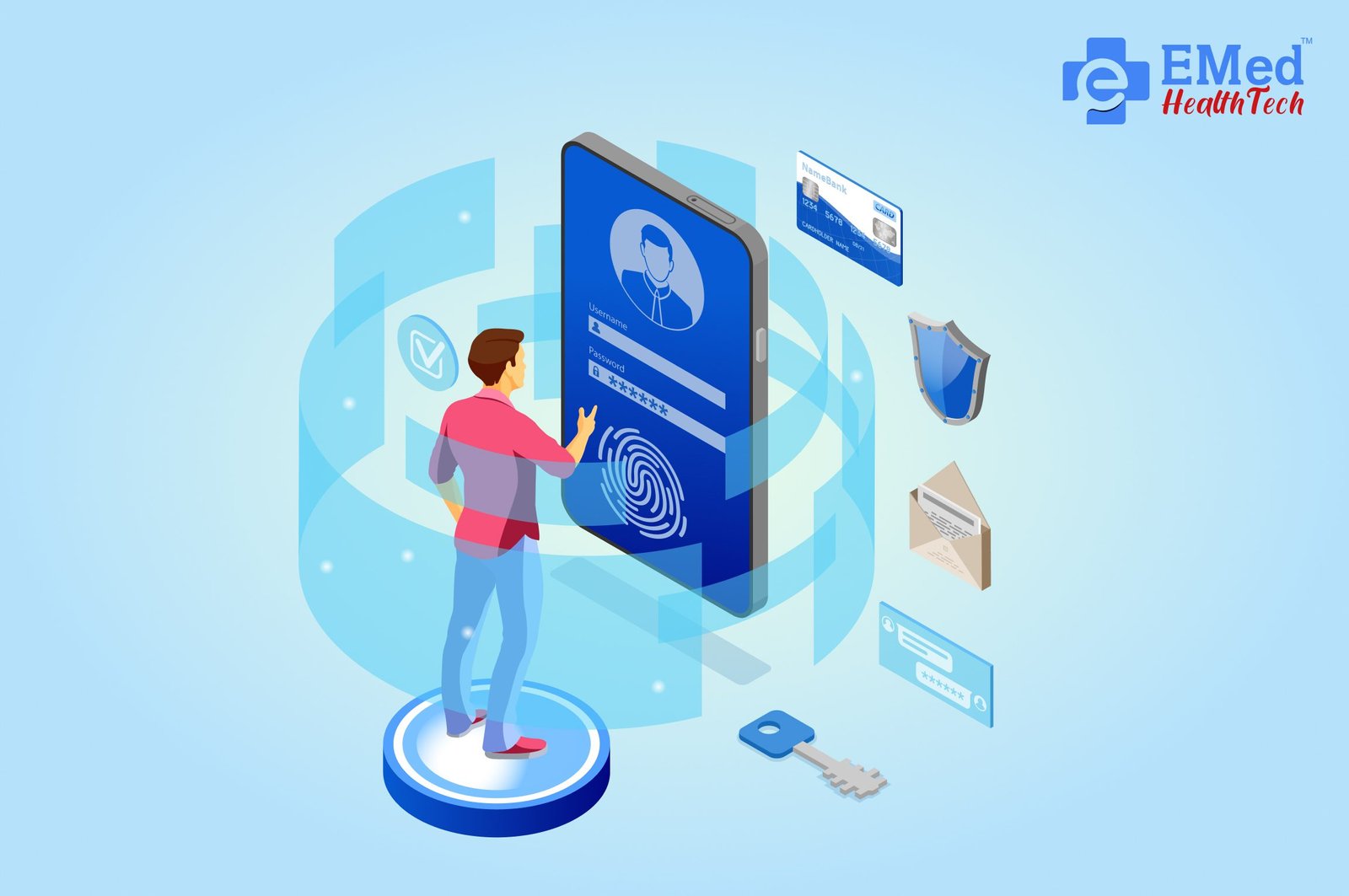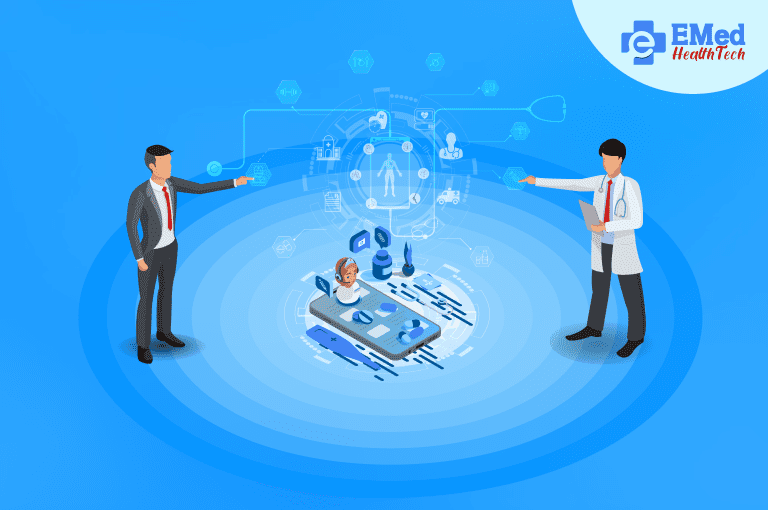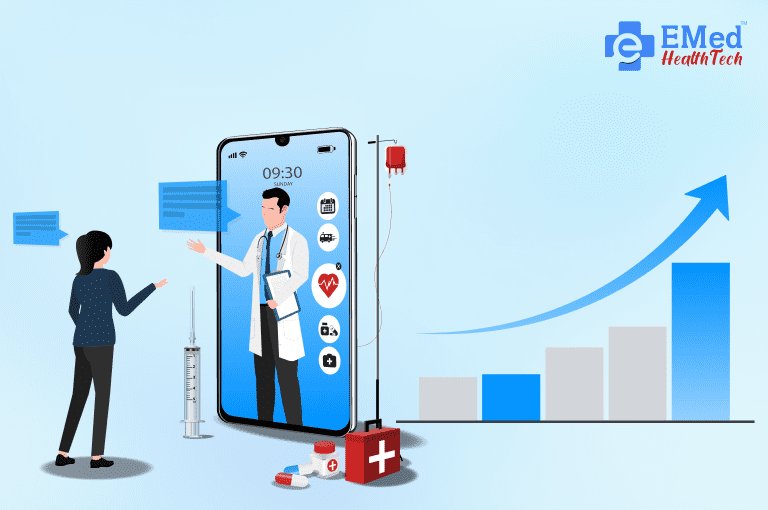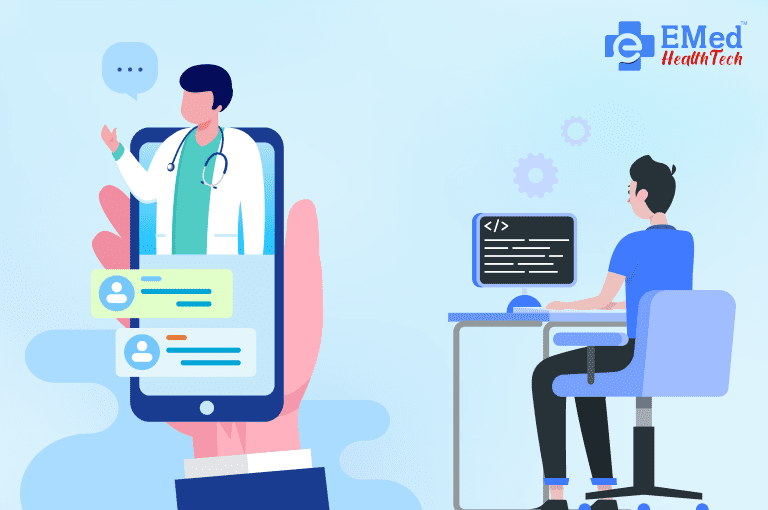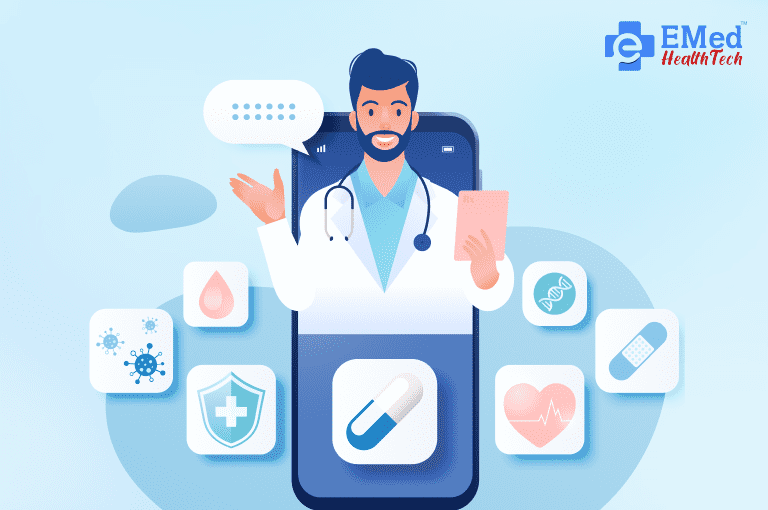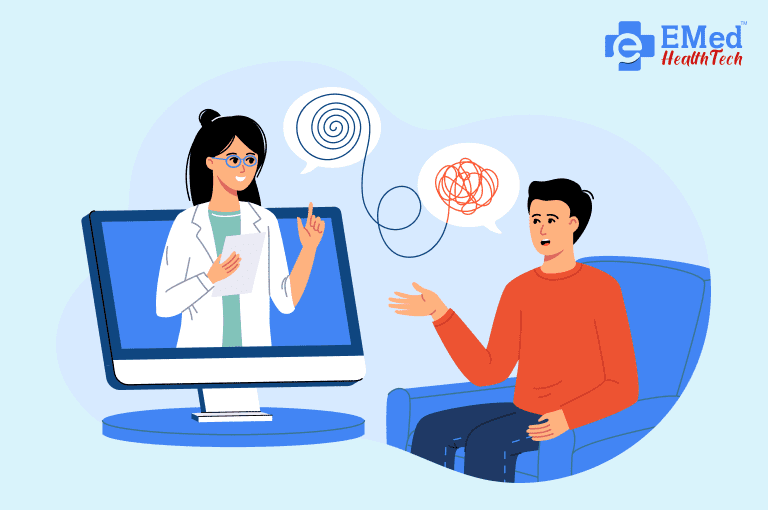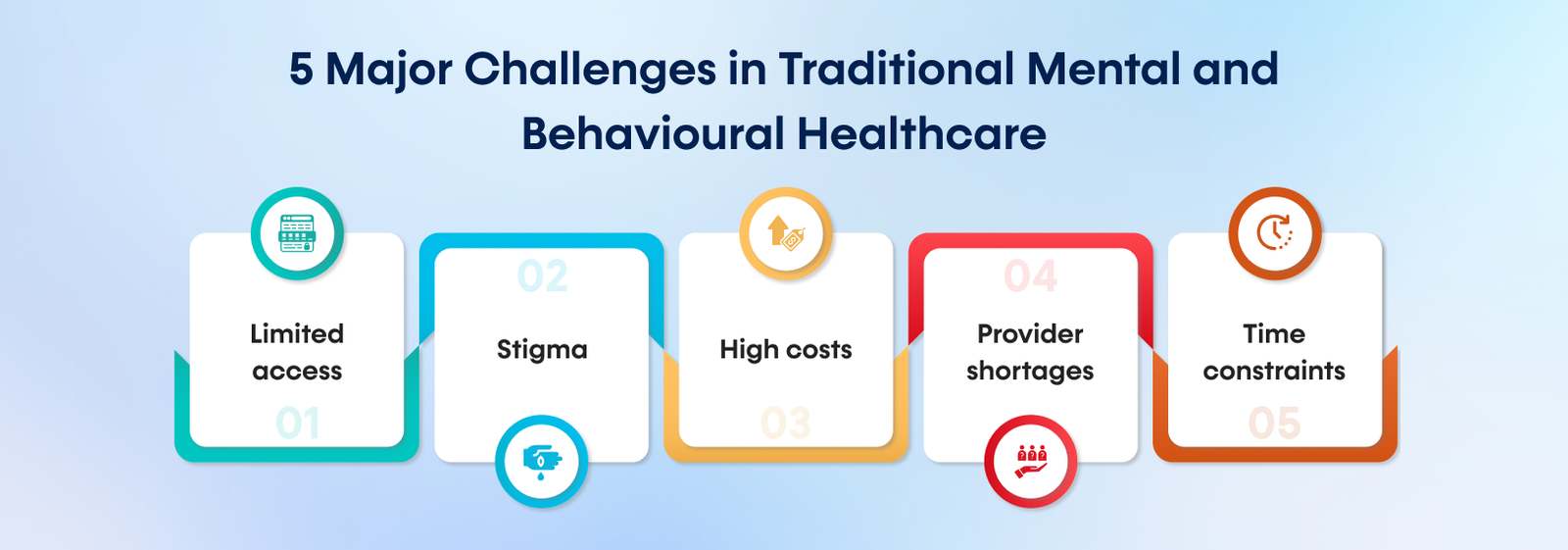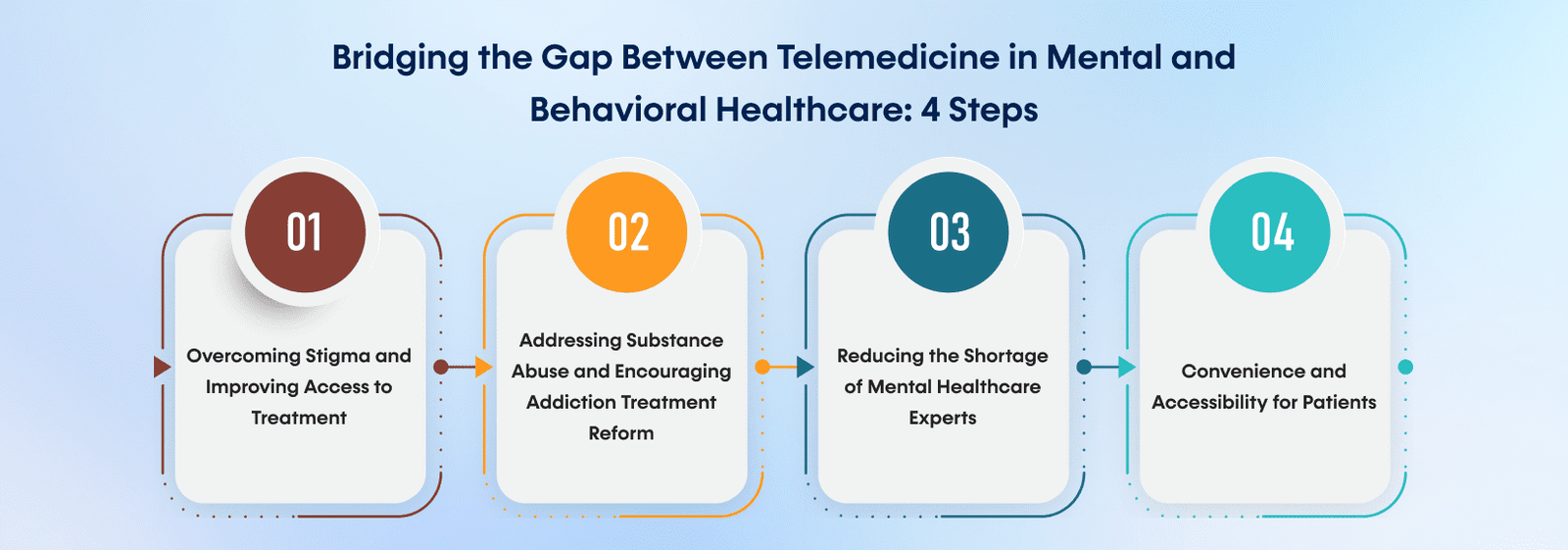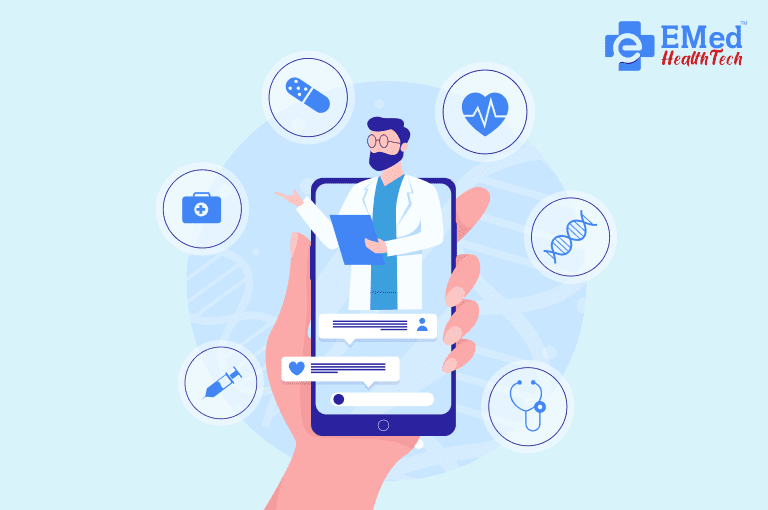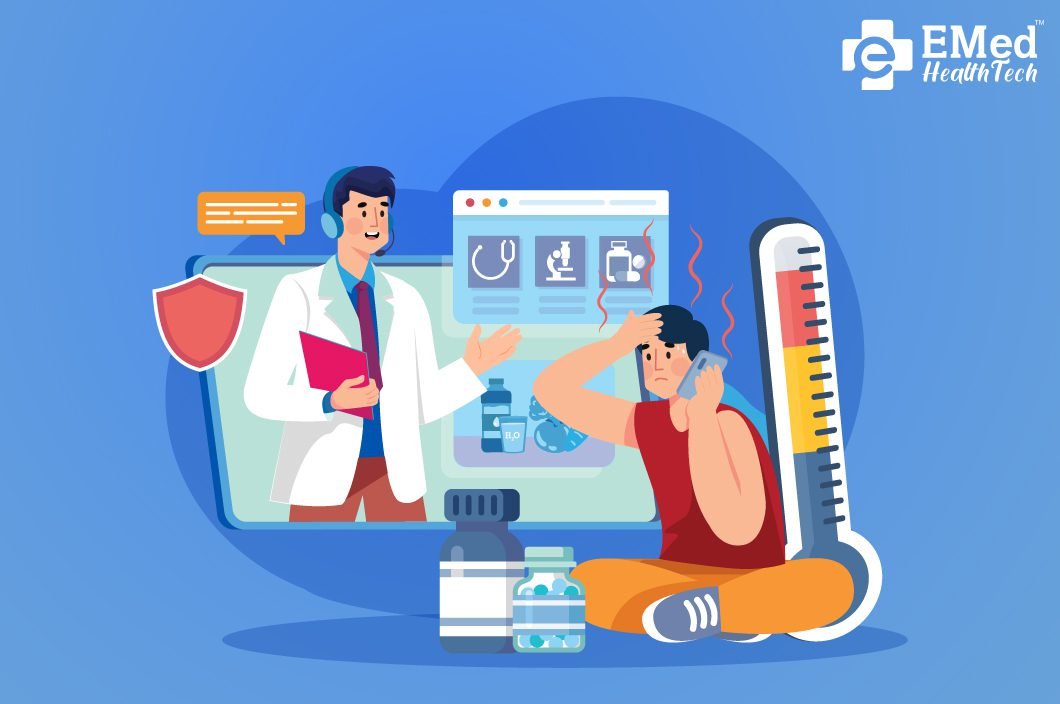Nowadays, the use of modern tools is increased, thus digitalization is a backbone now in industries such as healthcare, pharmaceuticals, hospitals, clinics, and more. Doctor appointment app development can turn the tide as it provides better patient engagement, credibility, advertising, and convenience for everyone in any respective place. These doctor appointment booking systems have changed the conventional healthcare system because it is more patient-centric and open at your fingertips. Let’s dig into this article to investigate how doctor appointment app development can maximize patient engagement.
The Role of Doctor Appointment App Development in Improving Patient Engagement
Our doctor appointment app is outlined with understanding engagement at its center. With our innovative strategies, we offer features that fulfill the needs of both patients and healthcare providers. Out of many, a few standout aspects are discussed below:
1. Easy to Use Interface
We ensure doctor app development is user-friendly for better patient engagement. You don’t need to be a pro, your age will not matter as we have a customized doctor appointment app that boasts a user-intuitive interface. Effortlessly patients can operate the application and make the initial setup process smooth and efficient. This is a quick learning curve. Encourages patients to use the app.
2. Seamless Bookings
The most helpful feature of our app is the doctor appointment booking system. This includes permitting patients to book arrangements with their favored specialists easily. Patients can see accessible time spaces and select a helpful time without the bother of long waiting periods or phone calls. This not only spares time but also diminishes the authoritative burden on healthcare suppliers, improving overall efficiency.
3. Integration with EHR Frameworks
Our doctor app development prioritizes integrating Electronic Health Records (EHR) frameworks. This integration permits real-time information admissions, guaranteeing that patients and specialists have access to up-to-date health data. Patients can see their vital records, test results, and treatment plans straightforwardly through the telemedicine app development. This straightforwardness cultivates trust and empowers patients to take an active role in overseeing their health.
4. Telemedicine Capabilities
Telemedicine has emerged as a crucial element in the delivery of healthcare. With the assistance of our on-demand doctor app development, consumers may have audio or video consultations with medical experts who are interacting through telemedicine app features. This aspect of doctor app development is particularly beneficial for individuals facing mobility challenges or residing in areas. Our doctor app development offers on-time consultation to ensure that patients receive the utmost care improving their overall well-being.
5. Regular Customized Notification & Updates
To update patients with what’s new, we have designed telemedicine app development, utilizing this tech, patients effectively get notifications and updates. Appointment reminders, medication alerts, and follow-up messages are a few of the notifications that patients will receive. These regular updates pop up on patients’ mobile devices so that they can adhere to their treatment plans and attend scheduled appointments leading to better health results.
6. Secure and Easy Payment Process
Our doctor appointment app development consists of secure payment gateways allowing patients to make transactions reliably for consultation and services through the application. This feature guarantees a consistent and hassle-free installment encounter, decreasing charging slacks and improving patient comfort. The app adheres to PCI DSS measures, guaranteeing that all exchanges are secure and that understanding information is ensured.
7. Access to Top Doctors
Patients frequently look for nitty-gritty data from healthcare suppliers, sometimes recently booking appointments. Our doctor appointment app development provides profiles of specialists, including their credentials, areas of expertise, patient reviews, and availability. This transparency enables patients to make decisions about their healthcare enhancing their involvement and satisfaction.
Enhanced Communication Channels
For better understanding, viable communication between patients and healthcare providers is essential. Our telemedicine app development incorporates communication channels such as in-app information, voice calls, and video interviews. These highlights encourage incite and effective communication, guaranteeing that patients can easily reach out to their specialists and get opportune reactions.
9. Real-Time Health Monitoring
For patients with persistent conditions, nonstop well-being monitoring is fundamental. Our telemedicine app development supports connecting with devices and IoT technology enabling the real-time tracking of health metrics, like heart rate, blood pressure, and glucose levels. This data is transmitted to healthcare providers via a doctor appointment app, enabling management of health and appropriate interventions.
10. Customizable Client Experience
Understanding that each patient has unique needs, our doctor app development offers customizable features. Patients can personalize their app interface, set preferences for notifications, and select their preferred mode of communication. This customization improves client satisfaction and energizes standard app utilization.
Benefits of Doctor Appointment App Development
1. Transparency
One of the essential benefits of doctor appointment app development is the upgraded straightforwardness between healthcare suppliers and patients. By integrating EMR and Electronic Health Records (EHR) into the app, patients can pick up real-time data to get their well-being data. This transparency guarantees that patients are well-informed about their health, treatment plans, and vital history. In addition, healthcare professionals can conveniently understand data, empowering them to make educated choices. This made strides in straightforwardness, cultivating belief and communication, and fortifying the patient-provider relationship.
2. Disposes of Enthusiastic Hole
Doctor app development, moreover, offers assistance in bridging the gap between patients and healthcare suppliers. Conventional healthcare intuitive can sometimes need the enthusiastic back that patients require. With highlights like video and sound meetings, patients can interface with their specialists more individually and sympathetically. These virtual intelligences permit patients to specify their concerns and get enthusiastic support, improving their general healthcare. Also, chatbot highlights give 24/7 help, guaranteeing patients always feel upheld.
3. Patients Take Control of Their Wellbeing
Enabling patients to require control of their well-being is another critical, good thing about doctor appointment app development. These apps give patients access to their health records, arrangement plans, and medicine updates. By having this data at their fingertips, patients can make educated choices in their healthcare. This strengthening led to expanded patient engagement, as they ended up with dynamic members overseeing their well-being. Additionally, patients can make choices considering their budgetary limitations and individual inclinations, driving them to more personalized and palatable healthcare experiences.
4. Understanding Customization and Custom-made Treatment
Telemedicine app development encourages customized and custom-made treatment for patients. Healthcare suppliers can analyze each patient’s remarkable restorative history and current health information through the app, permitting more personalized treatment plans. This customization is especially advantageous when overseeing expansive understanding volumes because it streamlines the method of exploring understanding records and fitting care-like manners. Personalized care moves forward with quiet results and satisfaction, as treatments are better suited to a person’s needs and conditions.
Conclusion
Doctor app development has greatly increased patient engagement to provide better interaction between patients and doctors. With the doctor appointment booking system, patients may streamline the booking procedure whereas telemedicine app development provides unmatched accessibility and convenience.
Don’t let your patient hesitate to reach you. Partner with EMed HealthTech today, a reputable doctor app development company to take benefits and reach new heights in patient engagement!

